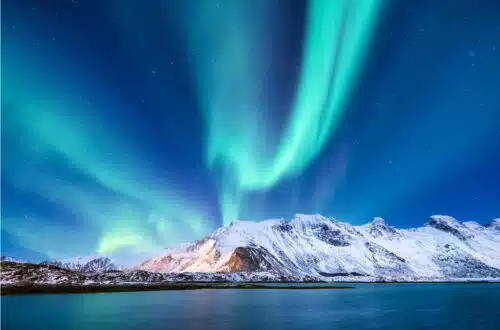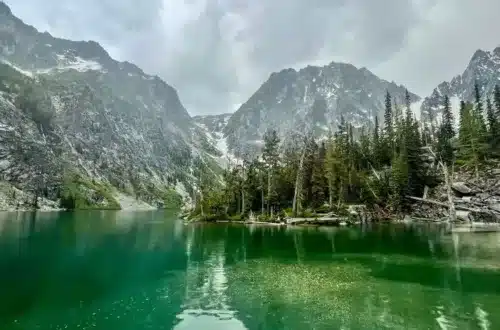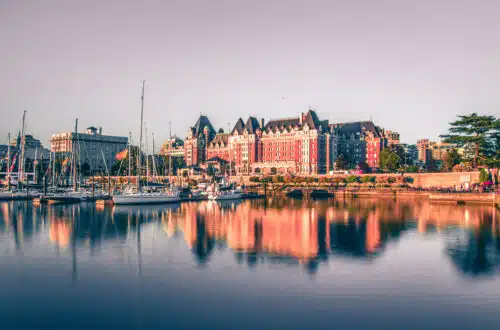USA Winter Season: Dates, Weather & Traditions
Have you ever wondered about when the USA winter season starts? Then I got you covered.
Winter is one of my favorite seasons in the US. Many places are covered in a blanket of snow and houses are decorated to the brim.
But when does winter actually start? And how long does it last? And most importantly: where will I be able to see snow in winter in the US?
All of these questions and more will be answered in this post. I have taken a deep dive into books and databases to give you a great overview of what winter in America looks like.
Let’s get to it.
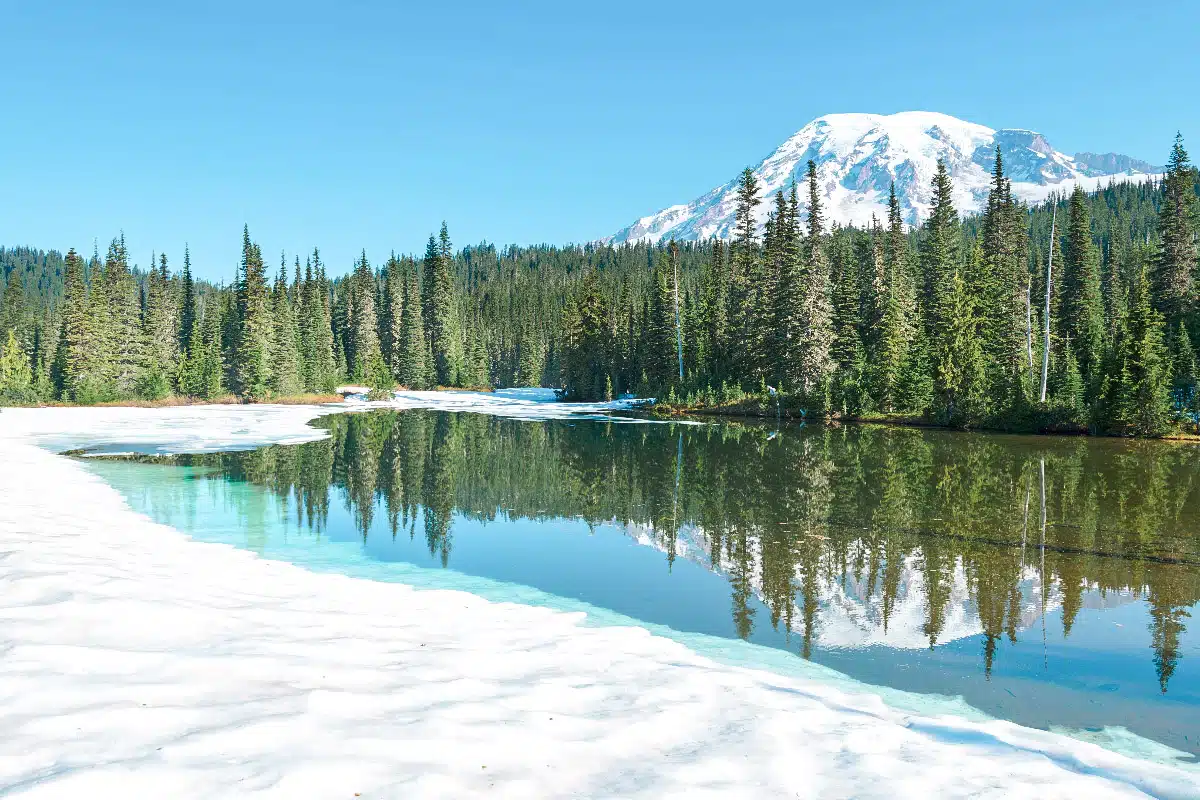
1. Winter Season USA: Meteorological
In the USA the meteorological winter season runs from December 1 to February 28 or 29 (depending on leap year). So the winter months according to this are December, January, and February.
The Meteorological seasons are based on the calendar and average temperatures. It has nothing to do with the astronomical stuff like solstices.
This way it is easier for weather researchers to keep track of stats and trends. The meteorological seasons are the same each year.
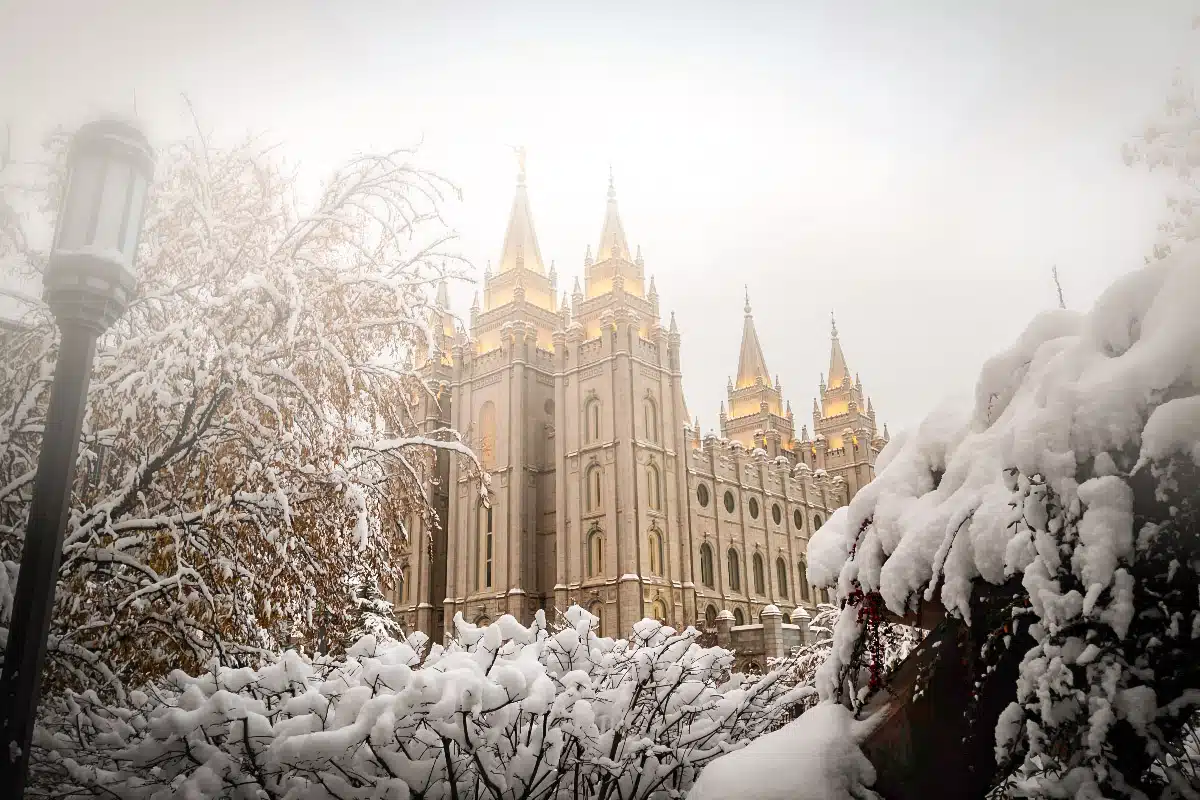
2. Winter Season USA: Astronomical
Astronomical winter in the USA starts around December 21 and ends around March 20.
The dates can vary a bit each year. This way of measuring the seasons is based on the position of the Earth relative to the Sun.
So here’s how it works: The Earth is tilted on its axis, right? When the Northern Hemisphere is tilted away from the Sun, that’s when astronomical winter happens.
It starts on the winter solstice which is the shortest day of the year. Winter season in the USA ends on the vernal equinox when day and night are about the same length.
Unlike meteorological winter, this one’s not about average temps or calendar dates. It’s all about how Earth moves around the Sun.
This way of measuring is less convenient for scientists and researchers.
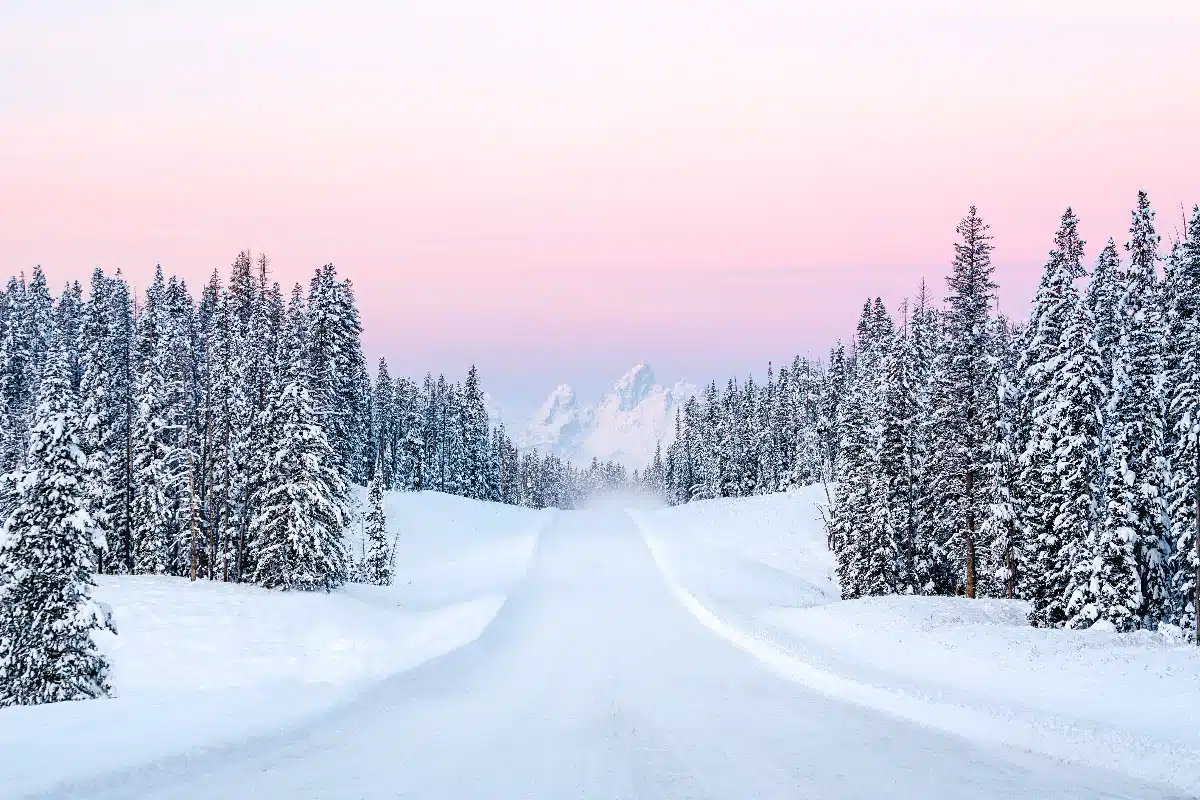
3. The Four Seasons in the USA
I also wanted to give you a quick overview of the other seasons in the USA.
Here is a neat little overview of when the seasons in the USA happen, and what the differences are between astronomical and meteorological seasons.
Meteorological Seasons
Winter: December, January and February
Fall: September, October and November
Astronomical Seasons
Winter: Starts around Dec 21 and ends around Mar 20. Starts with the winter solstice, and ends with the vernal equinox
Spring: Starts around Mar 20 and ends around Jun 21. Begins with the vernal equinox, and ends with the summer solstice
Summer: Starts around Jun 21 and ends around Sep 22. Starts on the summer solstice and ends with the autumnal equinox
Fall: Starts around Sep 22 and ends around Dec 21. Begins with the autumnal equinox, and ends with the winter solstice
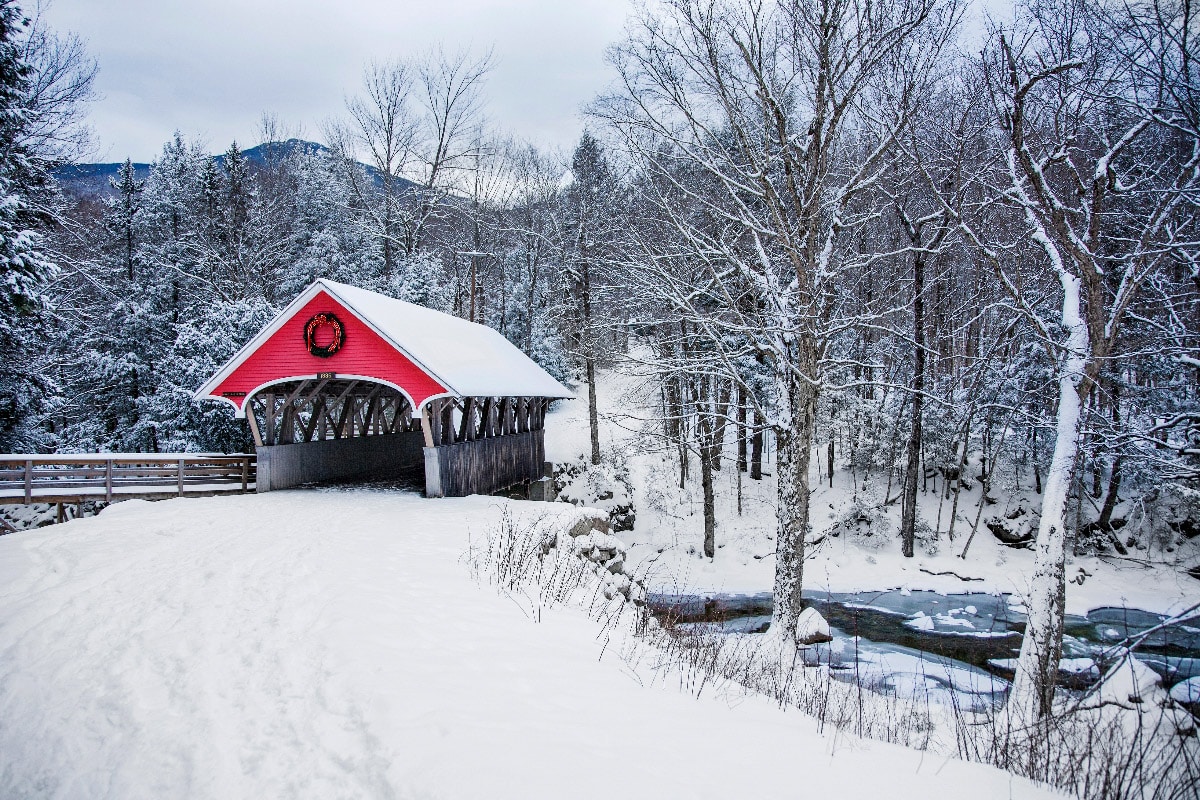
4. Average Weather in Winter in the USA
It is hard to give a clear answer on what the winter season in the USA looks like.
The entire country is huge, and there are big differences in temperature and weather from state to state.
To give you a bit of a taste of what the winter season feels like in the USA, I have made an overview of the geographical areas in America and their average winter weather.
Northeast
- Temperatures: Cold, often below freezing, around 20-40°F
- Snow: Lots of snow, usually feet and not inches
Midwest
- Temperatures: Super cold, can get below zero, around 10-30°F
- Snow: Heavy snowfall, especially around the Great Lakes
South
- Temperatures: Mild to chilly, rarely below freezing, around 40-60°F
- Snow: Not much, but some areas can get a dusting
West Coast
- Temperatures: Mild, especially in SoCal, on average 0-65°F in Southern Cali, 40-50°F up north
- Snow: Mostly in the mountains, like the Sierras
Southwest
- Temperatures: Varies a lot, chilly nights, on average 40-55°F
- Snow: Rare, but mountains like the Rockies get plenty
Southeast
- Temperatures: Chilly to mild, on average 45-60°F
- Snow: Rare, but it can happen
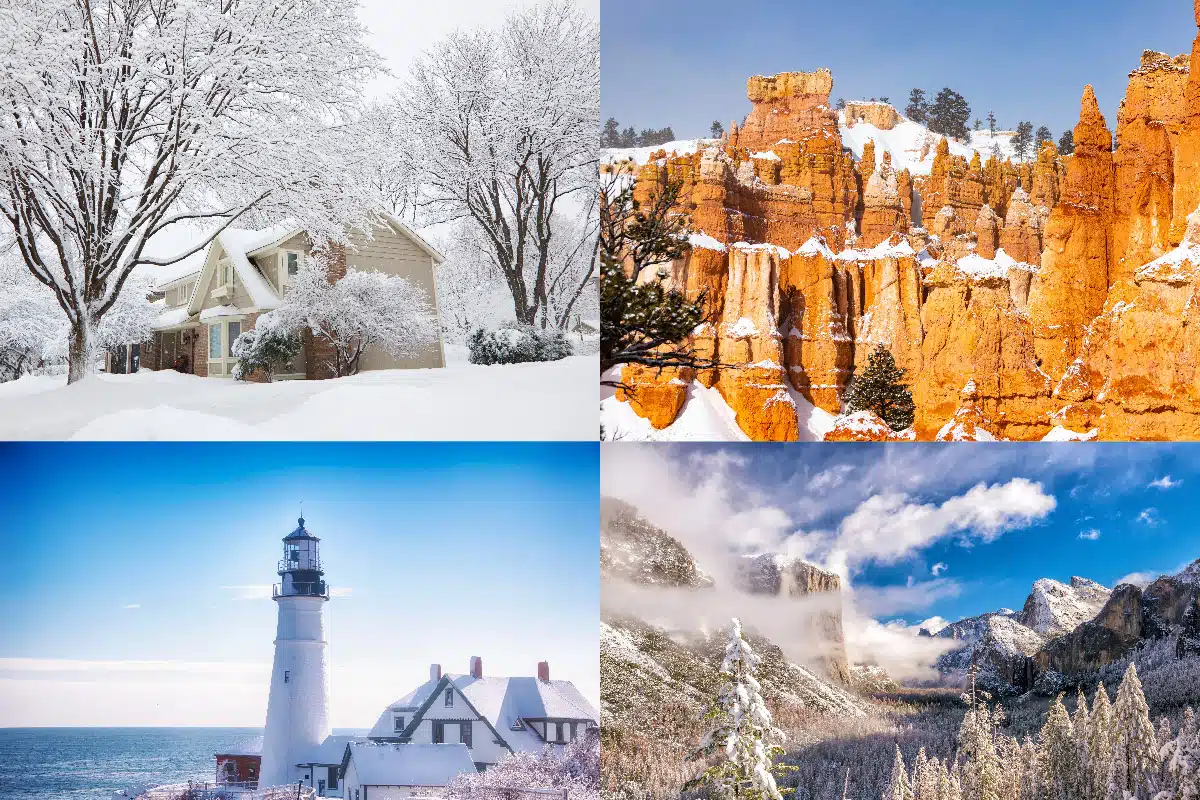
5. Festivities and Holidays
Winter season in the US is packed with all kinds of celebrations. Whether you’re into religious holidays, cultural events, or just wanna party – ’tis the season.
I have made a little overview of the most important national and regional holidays and festivities that you can find in the USA in winter.
National Holidays
- Christmas (Dec 25) – Celebrated with gift-giving, feasts, and impressive decorations (my personal favorite holiday)
- New Year’s Day (Jan 1) – Parties, fireworks, and resolutions
- Martin Luther King Jr. Day (Third Monday of Jan) – Honors the civil rights leader with parades and events
- Presidents’ Day (Third Monday of Feb) – Patriotic events and parades
Regional and Cultural
- Hanukkah – Jewish festival of lights, the dates vary each year
- Kwanzaa (Dec 26 to Jan 1) – Celebrates African heritage
- Las Posadas (Dec 16-24) – Popular in Hispanic communities, reenacts Mary and Joseph’s journey
- Lunar New Year – Celebrated in Asian communities, dates change each year
- Epiphany or Three Kings Day (Jan 6) – Big in some Christian communities
- Mardi Gras – Huge in New Orleans. Parades and parties before Lent starts
Festivities and Events
- Winterfest – Different cities have their own versions, usually with lights and ice sculptures
- Ice Fishing Derbies – Big in cold states like Minnesota and Wisconsin
- Rose Parade (Jan 1, California) – Floats and marching bands
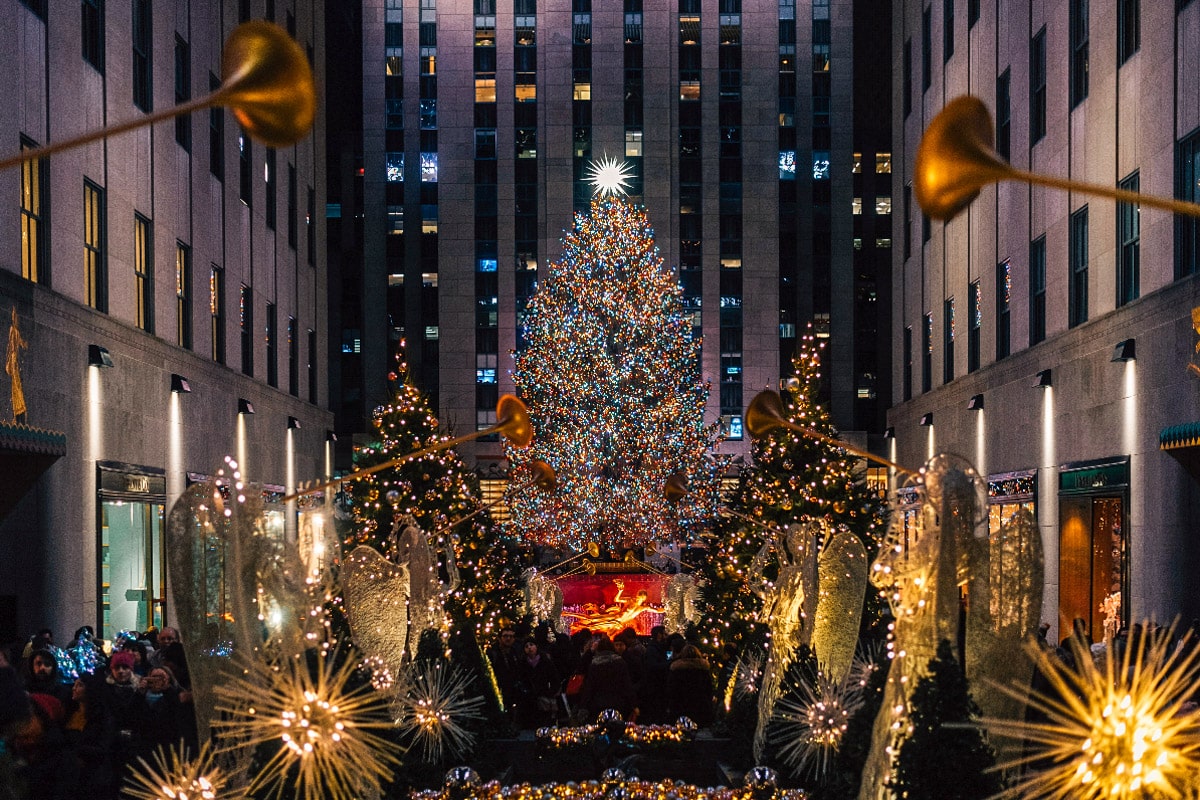
6. Amazing USA Winter Destinations
Can’t decide yet where to go on your USA winter adventure? I have got you covered with the most amazing winter destinations in the USA:
Aspen, Colorado – Ski paradise. Hit the slopes by day, cozy up by a fireplace at night
New York City – The city’s magical in winter. Ice skating at Rockefeller Center and Broadway shows? And who does not love the decorations?
Miami, Florida – Escape the cold and hit the beach. It’s warm and sunny, like a mini-summer vacay
New Orleans, Louisiana – Mardi Gras vibes! Parades, music, and lots of beads. What’s not to love?
Yellowstone National Park, Wyoming – A winter wonderland for nature lovers. Think geysers, hot springs, and snowy landscapes.
North Dakota: Think sun halos, Santa’s village, and Northern Lights

Conclusion: USA Winter Season
To sum it up, the meteorological winter season in the USA is in December, January, and February.
The astronomical winter season in the USA is different each year, usually, it is from December 21 and ends on March 23.
Meteorological winter is based on the calendar and average cold temps. Astronomical winter is all about Earth’s tilt and its orbit around the Sun.
The weather in the USA in the winter months greatly depends on the region. While the Northwest experiences lots of snow, Southern California has milder winters.
The winter season in the US is full of festivities and holidays. Think Christmas, Lunar New Year, and Mardi Gras.
If you are looking for an amazing winter getaway in America, why not head to Aspen, Colorado, or even New York?
Winter in the USA is magical, one of my favorite seasons.
In the USA, the winter months are December, January and February. It’s a chilly time of year when you can enjoy cozy moments indoors or explore winter wonderlands in various states. Great for experiencing different cultures and holiday festivities!
The United States experiences four distinct seasons: spring, summer, fall (autumn), and winter. Spring brings blossoming flowers, while summer is hot and sunny. Fall is famous for colorful foliage, and winter offers snow and chilly temperatures. Each season has its unique charm and activities.
November in the USA isn’t considered the full-blown winter season. It’s more like the transition period from fall to winter. While some northern states might experience early snowfall, others can still have milder temperatures. So, November varies, but it’s not quite winter yet!
Winter in the Northern Hemisphere typically starts around December 21st and lasts until March 20th. During this time, many regions experience colder temperatures, shorter days, and, in some areas, snowfall. It’s a season known for its cozy vibes and winter activities!
Winter in the Southern Hemisphere generally spans from June 21st to September 22nd. This is when countries like Australia, New Zealand, and parts of South America experience colder temperatures and shorter days, opposite to the Northern Hemisphere’s seasons. It’s a great time for skiing and other winter sports down south!
es, December in the USA can be quite cold, especially in the northern states and higher elevations. Many regions experience chilly temperatures, and some areas may even have snowfall, creating a festive and wintry atmosphere. It’s a cozy time of year.
Many parts of the USA, particularly in the northern states and mountainous regions, often have snow at Christmas. This snowy backdrop adds to the holiday charm and is associated with traditional Christmas imagery. However, in southern and coastal areas, it’s less common to have a white Christmas, as temperatures are milder. So, it varies by region.
The coldest month in the USA varies depending on the region. In many northern states, January is typically the coldest month, with the lowest temperatures and the most snowfall. However, in some areas, especially in the central and western parts of the country, February can also be bitterly cold. So, it varies, but generally, it’s during the winter months of January and February.

About the Author
Sabrina is a passionate travel blogger and content creator, based in the Netherlands. She spends most parts of the year abroad at various destinations with her husband.
She provides slow-paced itineraries that focus on quality over quantity. Sabrina wants to help her readers to get more out of their travel experiences – while doing less. Read more.
